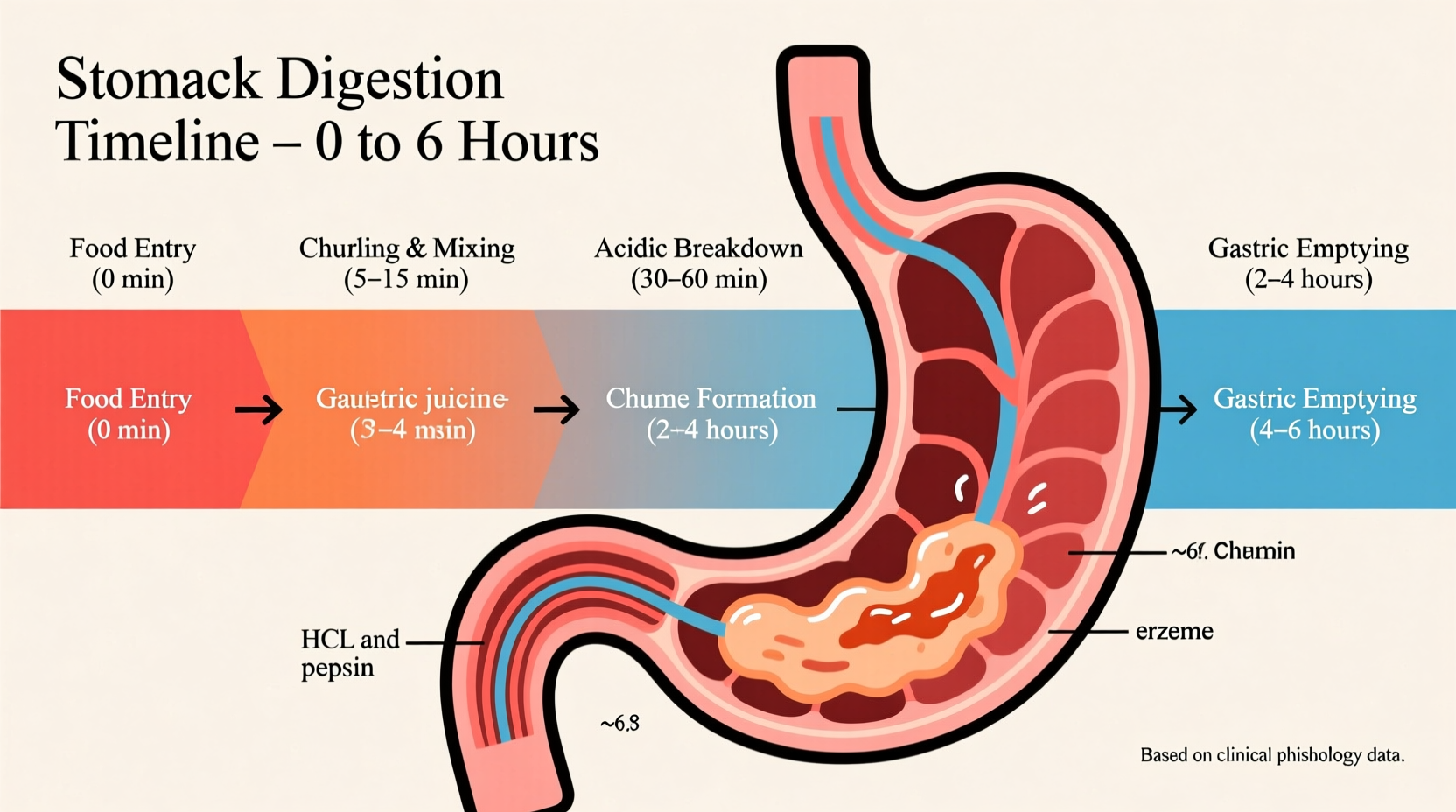Ever wonder why you feel full for hours after a steak dinner but get hungry again quickly after a sugary snack? The answer lies in gastric emptying—the process that determines how long does food remain in the stomach before moving to your small intestine. This biological timeline affects everything from nutrient absorption to when you'll feel hungry again.
The Digestion Clock: What Science Tells Us
Gastric emptying isn't a one-size-fits-all process. Your stomach acts like a sophisticated processing plant that adjusts its pace based on multiple factors. According to research from the National Institute of Diabetes and Digestive and Kidney Diseases, the average healthy stomach empties:
- Liquids: 15-20 minutes for water and clear fluids
- Simple carbohydrates: 1-2 hours (like fruit juices or white bread)
- Proteins: 2-3 hours (chicken, fish, eggs)
- Fats: 3-5+ hours (avocado, cheese, fried foods)
- Mixed meals: 2.5-4 hours (balanced dinner with protein, carbs, and fat)
These timelines explain why that morning smoothie doesn't keep you full until lunch, while a salmon salad with olive oil dressing sustains you longer. The stomach's pyloric sphincter carefully regulates this process, releasing chyme (partially digested food) in small batches to prevent overwhelming your small intestine.
Why Digestion Times Vary: The Critical Factors
Several elements determine exactly how long does food remain in the stomach for you personally. Understanding these variables helps explain why your digestion might differ from others'.
| Factor | Effect on Digestion Time | Practical Implication |
|---|---|---|
| Food composition | Fats > Proteins > Carbs in slowing digestion | Add healthy fats to meals for longer satiety |
| Meal volume | Larger meals take 30-50% longer to process | Smaller portions may reduce bloating |
| Hydration level | Dehydration slows gastric motility by 20-25% | Drink water between meals, not during |
| Physical activity | Moderate exercise speeds emptying by 15-20% | Light walking after meals aids digestion |
When to Pay Attention to Your Digestion Timeline
While occasional variations are normal, consistently slow or fast gastric emptying can signal health concerns. The Mayo Clinic identifies these red flags:
- Persistent fullness: Feeling uncomfortably full more than 2 hours after average-sized meals
- Nausea patterns: Regular nausea unrelated to other illnesses
- Blood sugar swings: Unexplained fluctuations despite consistent eating
- Nutrient deficiencies: Signs of malabsorption like brittle nails or hair loss
Gastroparesis—a condition where stomach emptying takes more than 6 hours—affects approximately 4% of the population according to American Gastroenterological Association data. Diabetes patients face higher risk, with 30-50% developing some degree of delayed emptying.

Practical Applications: Using This Knowledge Daily
Understanding how long does food remain in the stomach isn't just academic—it directly impacts your daily choices. Implement these evidence-based strategies:
Optimize Meal Timing
Space meals 3-4 hours apart for average mixed meals. If consuming high-fat foods (like avocado toast with eggs), allow 4-5 hours before your next meal. This prevents digestive overload and maintains stable energy levels.
Medication Effectiveness
Many medications require specific stomach conditions. Antibiotics work best on an empty stomach (1 hour before or 2 hours after meals), while NSAIDs should be taken with food that's already partially digested (about 1 hour after eating).
Digestive Comfort Techniques
- Pre-meal hydration: Drink water 30 minutes before eating (not during) to avoid diluting stomach acids
- Temperature matters: Extremely cold foods can temporarily slow gastric motility by 10-15%
- Post-meal movement: Gentle walking for 10-15 minutes after eating improves emptying rates by 20%
When Digestion Science Meets Real Life
A 2023 clinical study published in the Journal of Gastroenterology tracked digestion times in 500 participants. Researchers found that individual variations often outweigh general guidelines. While the average avocado toast took 3.5 hours to empty, some participants processed it in 2.5 hours while others took 5 hours. This variation highlights why personalized digestion awareness matters more than rigid timelines.
The study also revealed that stress levels significantly impacted gastric emptying. Participants under high stress showed 25% slower digestion rates compared to their relaxed-state measurements. This explains why you might feel "full" for hours after a meal during stressful periods, even when consuming light foods.
Key Takeaways for Your Digestive Health
Instead of memorizing exact hours, develop awareness of your personal digestion patterns. Keep a simple food-timing journal for 3-5 days noting:
- What you ate and portion size
- When you felt full/hungry again
- Any digestive discomfort
This practical approach reveals your unique gastric emptying pattern far better than generic timelines. Most importantly, if you experience persistent digestive issues lasting more than 2 weeks, consult a healthcare provider rather than self-diagnosing.











 浙公网安备
33010002000092号
浙公网安备
33010002000092号 浙B2-20120091-4
浙B2-20120091-4